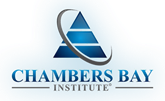Positive Habits of Successful Leaders
by Jim Solomon
“Successful people are not lucky. They’re consistent.” – Craig Groeschel
Leader Habits
Our study and work with thousands of leaders around the globe, from the C-suite to the loading dock, have revealed that five habits are consistently practiced by those most successful. The success of these leaders can be measured in their positive outcomes, while also seen in the satisfaction of their customers, the success of their organization, and the achievement & motivation of their team.
James Clear, Atomic Habits, works with leaders to improve their decision making and continuous improvement by developing and then practicing regular positive habits. James suggests that leaders focus on systems rather than just goals. He says that “goals are about the results you want to achieve; systems are about the processes that lead to those results.” Undoubtedly, it’s the practice of engaging in positive habits that leads to their success.
Jim Loehr and Tony Schwartz, The Power of Full Engagement, talk about the importance of creating positive rituals, or habits to help leaders manage and renew their energy throughout the day. They point out that all great performers, as well as leaders, rely on positive habits to manage their energy and regulate their behavior.
Craig Groeschel endorses the practice of positive habits as well. Craig says that “successful people are not lucky. They’re consistent.” He suggests that “if you get to know successful people, you’ll realize their success was not serendipitous. They achieve their win because of countless, seemingly small actions and decisions made consistently over time.” It’s what he calls “Fanatical Consistency”. Simply, “Successful people do consistently what other people do occasionally.”
Five Positive Leader Habits
Time and again, no matter what level the leader was serving, when five key positive habits were practiced regularly, their organizations were on top of their game. We’ve seen leaders who include these as a deliberate part of their leadership ritual, while others who seemed to practice these unknowingly. On the other hand, we’ve worked with struggling or newly emerging leaders assisting them to learn how these habits could bring the desired change they were seeking to their organization.
Assess – Listen, observe, talk to customers, engage with team members, get out and about, be visible. Through this practice you can identify strengths of your organization and areas that need improvement. This can lead to sustaining existing strategies, modifying them, or creating new ones.
Regularly, informally assess your organization and team members. By doing so you’ll gain a unique perspective or what we call “operational intelligence”. From this insight, you’ll learn what is actually going well, along with perceptions and misperceptions.
Shared Vision – Create a shared vision for your team by presenting its purpose – the What and Why. It should inspire the team by specifying what is to be accomplished and why it is important. As such, it serves as their compass heading or strategic direction. It needs to be clear, concise, and compelling.
In Stan McChrystal’s bestselling book Team of Teams, he explains his need to get everyone invested into his reframed operational practices and how he unified them by providing them a compelling common purpose. “This investment and unity then elicited genuine contributions from everyone – it gave people a reason to strive to be more than they are.”
Communicate – Effective communication, effective listening, and effective leadership are closely intertwined. Even more than what you say, your ability to listen reflects on your skill as a leader. The best leaders listen to inspire trust in others and to learn. This can only begin by demonstrating that you not only hear, but most importantly that you understand what is being said.
Communicate regularly, at all levels. Your team wants to hear from you and your boss deserves to hear from you to enable best decisions. Leaders can’t over communicate.
The renowned author and speaker Andy Stanley suggests that “Before you start to communicate, DETERMINE YOUR GOAL. Why are you communicating? PICK A POINT. Where are you heading with this message? Did you end up where you wanted to go? ”
Feedback – Seek and provide feedback. Let your team know that you are not only open to their input, but that you expect it.
Leadership expert Kim Scott suggests that “asking for feedback also creates a culture of trust and transparency. With concerns about an economic downturn rising, already overwhelmed teams are being asked to do more with less. When employees feel like their input matters, they’re more likely to remain loyal, engaged, and productive. They’re also much more willing to surface valuable concerns and suggestions. But uncertainty also makes it much harder to get honest feedback. When people feel anxious or that their jobs might be in jeopardy, they’re more reticent to speak up, especially to management.”
Use tools like 360 assessments and culture surveys to get formal feedback. According to industry expert Dan Denison, “After 20 years of commercial use, it [Denison Model®] continues to be the industry’s leading quantitative model with the strongest links to business performance outcomes – such as profitability, growth, innovation, customer satisfaction, employee engagement, and quality.
Gratitude & Affirmation – Recognition, awards, an authentic thank you, when earned, provides employees a priceless intangible. Gratitude changes attitudes. The power of the words “thank you” sincerely said, can last a lifetime. It is surprising how many employees feel unappreciated simply because leadership has not taken the time to thank them personally, specifically, and sincerely, for their work or actions.
By consistently putting emphasis on leading with an attitude of gratitude, according to Mark Deterding, “leaders build confidence in others; improve productivity; foster innovation; develop positive relationships; and build’s trust”. The impact that gratitude can have on an individual and a team can’t be minimized. Josh Bowen, 3X5 Leadership, reminds us of the power of gratitude: “A person who feels appreciated will always do more than is expected.”
Recipient of Leader Habits
Nothing better than getting confirmation that these habits, when employed by leaders regularly, make a difference. This comment is representative of others we heard. “My boss shows us that he truly cares about us and our organization. Not that he necessarily loves us (all the time, anyway!), but he cares enough to consistently put to practice habits that benefit our customers, our organization, and specifically me and my team. We as a team feel it. That’s why we don’t have turnover, we routinely exceed our metrics, and we know that not only do co-workers have our back, but so does the boss!”
Integrator Leader Reflections
- Do you attribute your success to luck or to your consistent habits?
- Are you practicing positive leadership habits to create optimum outcomes?
- Is your decision making and continuous improvement enhanced through the practice of regular leadership habits?

www.chambersbayinstitute.com ● leadership@chambersbayinstitute.com
© All Rights Reserved Chambers Bay Institute 2023
|


You must be logged in to post a comment.